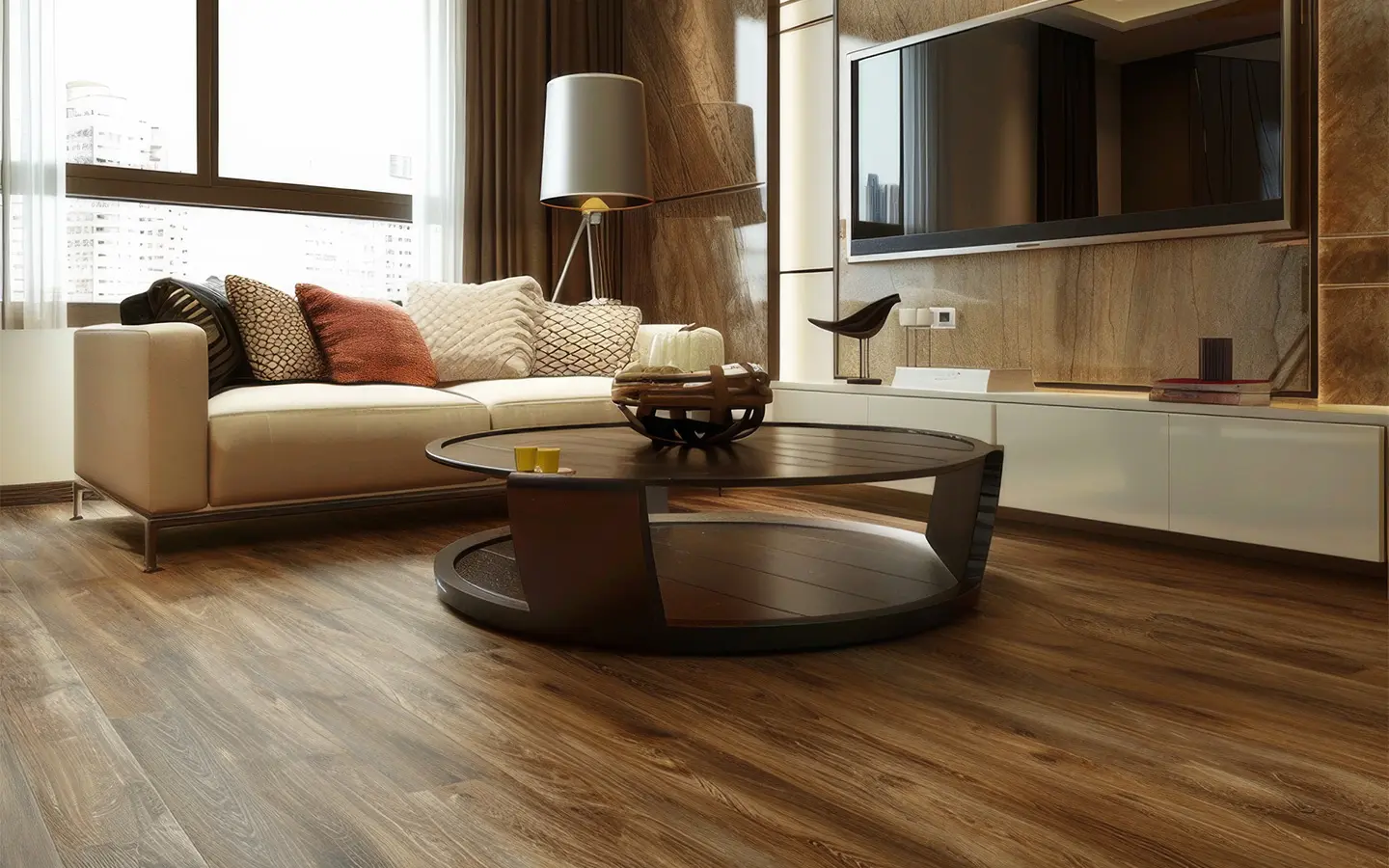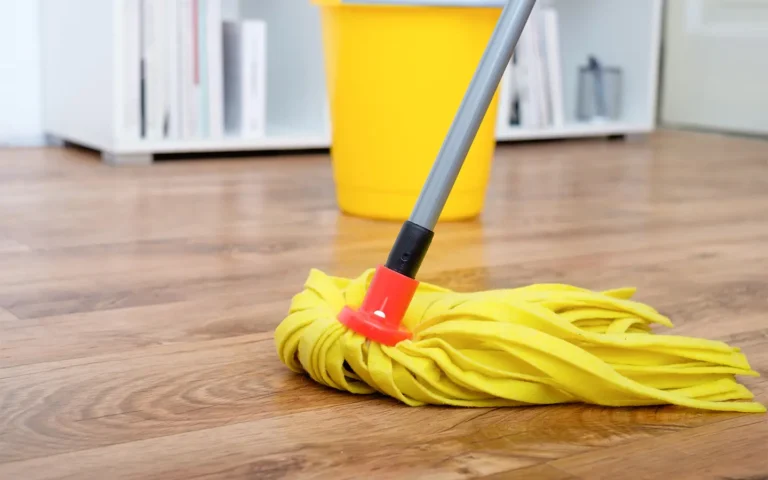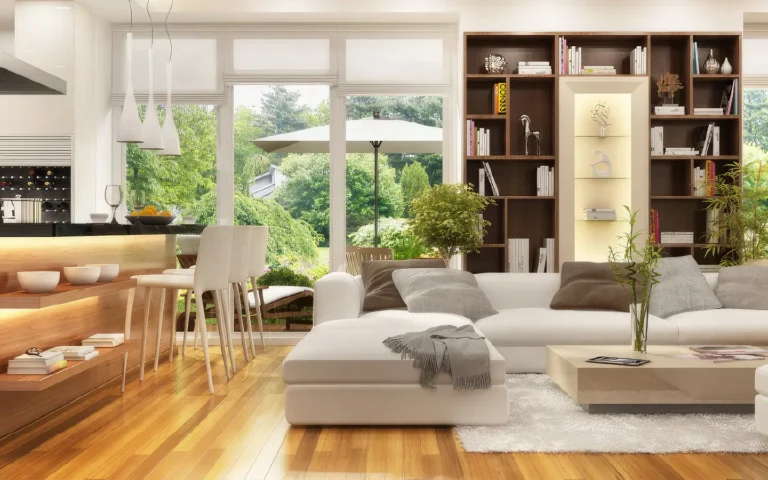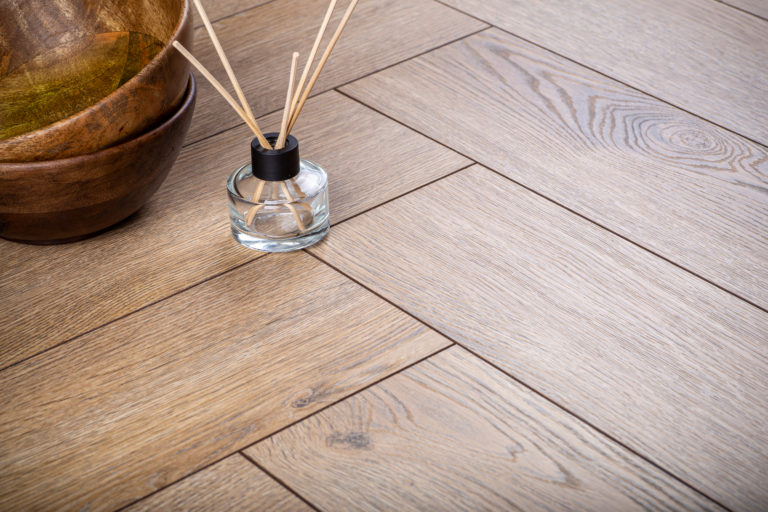When it comes to picking out vinyl plank flooring for your home, it feels like there’s an overwhelming amount of information out there. You’ve probably seen all the flashy ads and heard the sales pitches, but at the end of the day, you just want the facts without all the fluff. That’s exactly what we’re here to do.
LVP flooring is a solid choice for a lot of reasons. It’s durable, it’s got the look of real wood, and it’s more forgiving when it comes to maintenance. But choosing the right LVP for your home isn’t just about picking the prettiest pattern. It’s about understanding what’s going to work best for your space, your lifestyle, and your budget.
In this guide, we’ll walk you through everything you need to know before making a decision. We’re not here to dazzle you with jargon or make wild claims. We’re just here to share some straightforward advice based on our experience.
Whether you’re dealing with a busy household, looking for something pet-friendly, or trying to stick to a budget, we’ve got you covered.
What to Consider When Buying LVP Flooring
When you’re in the market for Luxury Vinyl Plank (LVP) flooring, it’s like being at a crossroads with numerous paths to take. The key is knowing what matters most for your space and lifestyle. Here’s a breakdown of the essential factors to keep in mind:
Durability and wear layer thickness:
First things first, let’s talk about what’s going to last. The wear layer is the protective coating on top of the vinyl flooring. It’s what stands between your beautiful floor and the daily wear and tear it’s going to face. Here’s a basic breakdown:
- Residential, low-traffic areas: At least 12 mil
- Residential, high-traffic areas: At least 20 mil
- Commercial use: 28 mil or above
A thicker wear layer means increased resistance to scratches, scuffs, and fading. Consider the amount of foot traffic, pets, and furniture movement in the area where you’ll install it.
Style and aesthetics:
You’ve got to live with this floor every day, so it should be something you like to look at. LVP comes in a variety of styles, colors, and patterns. Whether you’re into the classic look of hardwood or something more modern, there’s likely an LVP out there that matches your taste.
Consider the color palette of your room. Darker floors can show dust more readily, while lighter floors may hide imperfections better.
Installation method:
There are a couple of ways LVP can be installed, and your choice can affect both the installation cost and the floor’s performance down the line:
- Click-lock installation allows planks to snap together and “float” over the subfloor. This is often a DIY-friendly option.
- Glue-down installation requires the application of adhesive. It’s generally more stable but might be best left to professionals.
Water resistance:
One of LVP’s big selling points is its resistance to moisture, making it ideal for places like kitchens and bathrooms. However, not all LVPs are created equal in this regard.
Be sure to look for 100% waterproof LVP options when installing in rooms prone to water exposure.
Underlayment and acoustics:
Underlayment helps dampen noise, adds cushioning, and can improve insulation. It’s especially valuable for upper stories or rooms where noise reduction is desired.
Some LVP options come with attached underlayment, but you can also add it separately.
Eco-friendliness and health:
It’s also worth considering the environmental impact and health implications of your flooring choice.
Choose LVP that’s FloorScore® certified for low VOC emissions to ensure good air quality in your home. Air quality can be of special concern to people with increased sensitivity and allergies
Look for options with recycled content for a more environmentally friendly choice.
Core construction and added features:
Diving deeper into the world of Luxury Vinyl Plank (LVP) flooring, there are a few specific features and qualities that can really make a difference in how your flooring looks, feels, and lasts over time. Here’s what to zero in on:
- Core materials: WPC (wood-plastic composite) offers some cushioning, while SPC (stone-plastic composite) provides maximum rigidity and durability.
- Detailed texturing: High-quality LVP will closely mimic wood’s look and feel with textured patterns.
- Edge treatments: Beveled edges create a traditional plank look, while square edges give a more seamless appearance. Consider aesthetics and ease of cleaning.
- Dimensional stability: Check for specs indicating the LVP’s resistance to warping or gapping due to temperature and humidity fluctuations.
- Locking system strength (for click-lock types): A strong lock is key for preventing shifting and creating a long-lasting, tight fit.
Finally, don’t overlook the warranty. A solid warranty can give you peace of mind about your investment. Look for warranties that cover wear, staining, fading, and water damage. Also, consider the manufacturer’s reputation for customer support. Should anything go awry, you’ll want responsive and helpful support.
Focusing on these aspects will guide you toward a high-quality LVP flooring option that not only looks great but also stands up to the demands of your daily life. It’s about investing in something that you’ll be happy with for years to come without any surprises down the line.
Best Brands of 2024
Determining Your Budget: How Your Options Change with Money
Budgeting for new LVP flooring requires careful planning and understanding how pricing tiers impact your choices. Remember, these prices reflect materials only – you’ll need to factor in additional installation costs.
Entry-level LVP
Entry-level LVP is the most affordable option. it’s functional for low-traffic areas but might not be the most durable or realistic-looking choice.
- Ideal for: Temporary solutions, low-traffic rooms, and tight budgets.
- Wear layer: Typically 6-12 mil
- Core: Basic PVC or WPC
- Appearance: May lack realistic wood or stone textures.
- Price: $1 – $3 per square foot
Mid-range LVP
Mid-range LVP provides a good balance between affordability and quality. it’s suitable for most homes and offers a more realistic aesthetic than entry-level options.
- Ideal for: Balancing cost and quality, most residential applications.
- Wear layer: 12-20 mil offers improved durability.
- Core: Upgraded WPC or SPC for greater rigidity and water resistance.
- Appearance: More convincing wood/stone visuals, increased texturing.
- Price: $3 – $5 per square foot
Premium LVP
Premium LVP is the top-of-the-line choice, offering the most durability, realistic visuals, and advanced features. it’s ideal for high-traffic areas and those seeking a luxurious look.
- Ideal for: Long-term investment, high-traffic areas, luxurious look.
- Wear layer: 20 mil+ for the most demanding areas.
- Core: High-density SPC for maximum stability and performance.
- Appearance: Exceptionally detailed textures; may be hard to distinguish from real materials.
- Price: $5 – $8+ per square foot
Installation costs
Don’t forget to factor in installation costs, which can vary based on the complexity of the job and the rates in your area. DIY can save some cash, but professional installation might be the way to go for the best results, especially with premium products.
When hiring professionals for installation, expect to pay an additional $2-$5 per square foot on average.
Underlayment and extras
Consider the costs of any additional materials, like underlayment, moldings, and transition strips. These can add up but are essential for a complete and finished look.
When budgeting for LVP flooring, think about not just the upfront costs but also the value over time. Cheaper options might need replacing sooner, whereas investing a bit more upfront could mean enjoying your beautiful, hassle-free floors for many years to come. Like any good road trip, it’s about finding the right balance between cost, comfort, and the experiences you’ll have along the way.
Assessing Your Lifestyle Needs

When it comes to choosing the right LVP flooring, one size definitely doesn’t fit all. Your lifestyle plays a huge role in determining what kind of flooring will suit you best. Let’s take a look at how different aspects of your daily life might influence your choice:
Family dynamics
If your household is bustling with kids and pets, you’re going to need something that can stand up to a lot of foot (and paw) traffic. Look for LVP with a high wear layer thickness, typically above 20 mil for residential spaces that see a lot of action. Also, consider the texture and color of the flooring; something with a bit of grain and a mid-tone color can be more forgiving when it comes to showing scratches and dirt.
Entertaining
Love having friends and family over? Your floors are going to be the stage for all those gatherings. In this case, you might want to lean towards LVP options that not only have durability but also boast an aesthetic appeal. Wider planks and more exotic wood designs can add a touch of elegance and make your space feel more inviting.
Allergies and health
LVP is a solid choice for those with allergies due to its resistance to dust and allergens. However, pay attention to the VOC emissions of the product you choose. Flooring with low VOC emissions will contribute to better indoor air quality, making your home a healthier environment for everyone.
Comfort and warmth
If you’re someone who loves walking barefoot at home or you live in a cooler climate, the warmth and comfort of your floors matter. LVP with an attached underlayment or the option to add one can provide a softer, warmer underfoot feel, making those chilly mornings a bit more bearable.
Aesthetics and personal style
Your home is a reflection of your personality, so your flooring should match your style. Whether you’re into a modern, minimalist look or a classic, rustic vibe, there’s an LVP out there that can complement your decor. Don’t be afraid to express yourself through your flooring choices.
Maintenance and upkeep
Let’s be real; not everyone enjoys spending their weekends deep-cleaning their floors. If you’re looking for low-maintenance options, LVP is generally easy to care for. Just make sure to choose a product that doesn’t require special cleaners or treatments to stay looking its best.
By taking a close look at how you live your life day-to-day, you can choose an LVP flooring option that not only meets your aesthetic desires but also stands up to the demands of your lifestyle. It’s all about finding that perfect match that makes your life easier and your home more enjoyable.
Researching and Comparing Brands
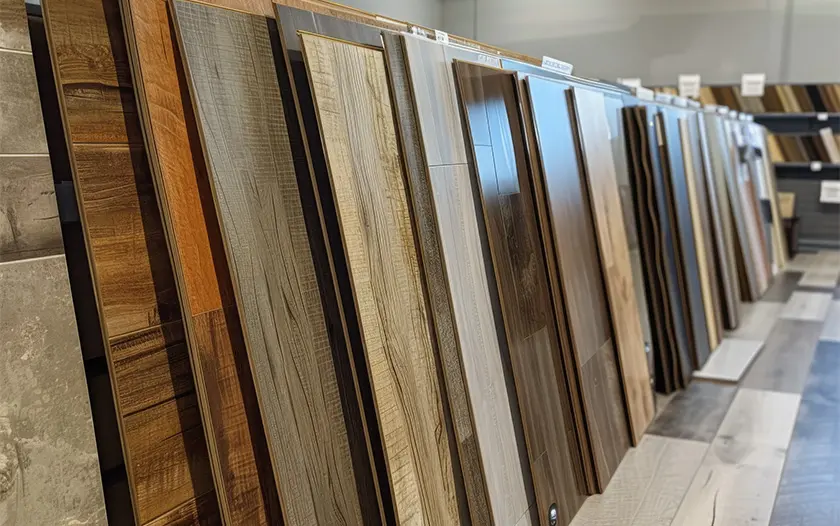
When you’ve got the lay of the land in terms of what you need from your LVP flooring, the next step is to dive into the sea of brands out there. Each one claims to be the best, but your job is to sift through the marketing speak and find the real deal. Here’s how to choose vinyl plank flooring:
Reputation and reviews
Start with the basics: what are people saying? Look for customer reviews and testimonials, but take them with a grain of salt. Everyone’s experience is unique. Pay more attention to consistent feedback across multiple sources. A brand that consistently gets praised (or criticized) for the same things might be showing its true colors.
Product lines and options
Some brands offer a wide range of LVP products, from budget-friendly to luxury options. Others might specialize in just one niche. Consider what each brand is known for and how their offerings align with your needs. Do they have the style, color, and texture options you’re looking for?
Technical specs and warranties
Get into the nitty-gritty of what the brands offer in terms of product specifications. Compare the wear layer thickness, core composition, dimensional stability, and water resistance. Also, take a close look at the warranty terms. A longer, more comprehensive warranty can be a sign of a brand’s confidence in its product’s durability.
Sustainability and certifications
If eco-friendliness is important to you, research the brand’s commitment to sustainability. Look for certifications like FloorScore or GreenGuard, which indicate low VOC emissions and a smaller environmental footprint. Some brands go the extra mile in using recycled materials or ensuring their manufacturing processes are environmentally friendly.
Customer support
The quality of customer support can make a big difference, especially if you run into issues down the line. Look into how accessible and helpful the brand’s customer service team is. Good customer support can be a lifesaver if you have questions or need assistance after your purchase.
Price points
Finally, compare the prices across different brands for similar quality and style options. Remember, the cheapest option isn’t always the best value, and the most expensive one isn’t necessarily the highest quality. Find the sweet spot where price, quality, and your specific needs meet.
By taking the time to research and compare brands, you’ll be better equipped to make an informed decision. It’s not just about picking a floor; it’s about choosing a partner for your home improvement journey. The right brand should offer the quality, style, and support you need to feel confident in your choice.
Finding the Right Retailer
Once you’ve got a handle on what you want and which brands resonate with you, the next step is to figure out where to buy your LVP flooring. The right retailer can make the process smoother, offer valuable advice, and even impact the final cost. Here’s what to consider when choosing a retailer:
Local vs. online
There’s something to be said for walking into a local store, seeing the products firsthand, and getting immediate answers from knowledgeable staff.
Local retailers can offer a personal touch and might be more flexible when it comes to delivery and installation services. On the flip side, shopping online can provide a wider selection and the convenience of browsing from your home. Weigh the pros and cons based on your preferences and needs.
Selection and availability
Some retailers might have exclusive deals with certain brands or offer a broader selection of products. If you’re looking for something specific, make sure the retailer you choose has what you need. Availability is also key; you don’t want to fall in love with a product only to find out it’s backordered for months.
Pricing and deals
Retailers can vary significantly in their pricing, even for the same products. Shop around to see who offers the best value. Don’t forget to ask about discounts, promotions, or package deals that include installation. Sometimes, the best deal isn’t the lowest sticker price but the most value-packed offer.
Expertise and service
A retailer that knows their stuff can be worth their weight in gold. They should be able to answer your questions, provide recommendations based on your needs, and offer insights you might not have considered. Good customer service goes a long way, especially if you’re new to buying flooring.
Installation services
If you’re not planning a DIY installation, check if the retailer offers installation services or can recommend trusted local installers. Sometimes, getting your flooring and installation from the same place can simplify the process and ensure better coordination and quality control.
Return policy and guarantees
Finally, familiarize yourself with the retailer’s return policy and any satisfaction guarantees. It’s reassuring to know you have some recourse if the product doesn’t meet your expectations or if there’s an issue with the installation.
Finding the right retailer is about more than just finding a place to buy your flooring. It’s about finding a partner that will support you through the entire process, from selection to installation. Take the time to choose a retailer that aligns with your needs and values, and you’ll be setting yourself up for a successful flooring project.
Requesting Samples
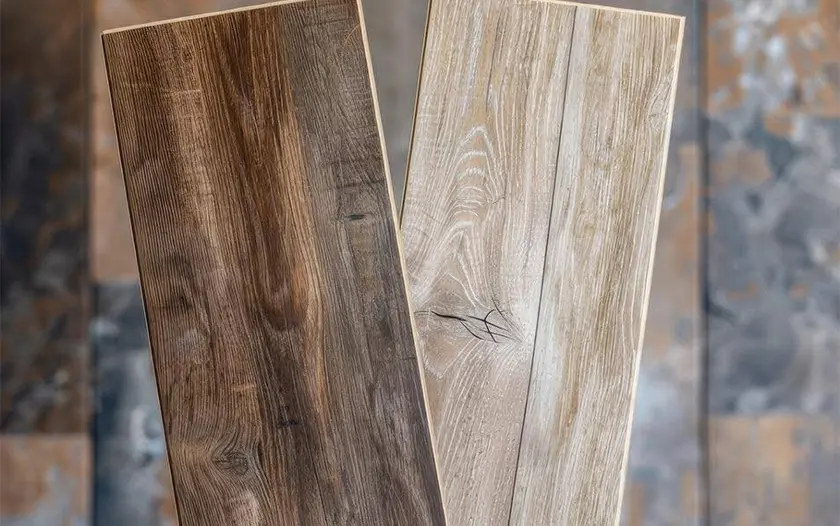
Before you make your final decision on LVP flooring, it’s wise to get your hands on some samples. Pictures online or in catalogs can be deceiving; there’s no substitute for seeing and feeling the material in your own space. Here’s how to go about requesting and using samples effectively:
Sample availability
Most reputable retailers and manufacturers offer samples, either for free or at a nominal cost. Check the brand or retailer’s website for sample ordering options. If it’s not clear, don’t hesitate to reach out to customer service. Remember, it’s in their interest to help you feel confident in your purchase.
Size matters
When you’re looking at samples, keep in mind that the larger the piece, the better you’ll be able to get a sense of the product. Some companies offer full plank samples, while others might send smaller pieces. If possible, opt for larger samples to get a more accurate feel for the flooring.
Live with it
Once you have the samples, put them in the room where you plan to install the flooring. Look at them under different lighting conditions and at various times of the day. Flooring can look dramatically different in the natural light of morning versus the artificial light of evening.
Test durability
If durability is a concern, don’t be afraid to put the samples to the test. Try scratching them with keys, spilling water on them, or subjecting them to whatever other challenges they might face in your home. It’s better to find out now if they can’t handle the stress.
Consider the decor
Place the samples next to your walls, furniture, and any other significant elements of the room. You want to ensure that the flooring will complement your existing decor or any changes you plan to make.
Get feedback
Sometimes, a second (or third) opinion can be invaluable. Show the samples to family members, friends, or even your interior designer if you have one. They might notice things you’ve overlooked or offer a fresh perspective on how the flooring fits into your space.
Take your time
Don’t rush the decision-making process. Spend a few days or even a week with the samples, moving them around and observing them in different contexts. This is a decision you’ll live with for years, so it’s worth taking the time to get it right.
Making Your Final Decision
After considering all the factors discussed above, it’s time to make your final decision on which vinyl plank flooring to choose. Trust your instincts and choose the option that best meets your needs and preferences.
In conclusion, choosing the right vinyl plank flooring involves considering factors such as thickness and wear layer, design and styles, installation method, waterproof properties, budget, lifestyle, and needs.
It’s important to research and compare brands, find the right retailer or online vendor, request samples, and consult with professionals if needed. Once you’ve made a decision, proper installation, maintenance, and care will ensure that your vinyl plank flooring looks beautiful and lasts for years to come.
About The Author

Courtney Daily
March 8, 2024
Courtney is a freelance writer who wears many other hats: kindergarten teacher by day, Broadway diva in the shower. She is a transplant Hoosier who originated in New England. When she isn't writing in her spare time, you will find her reading history books, arguing with her latest knitting project, or being beaten by her kids at most games.
